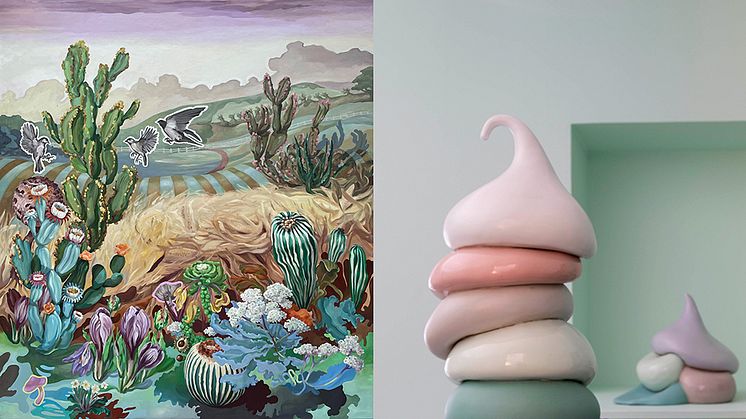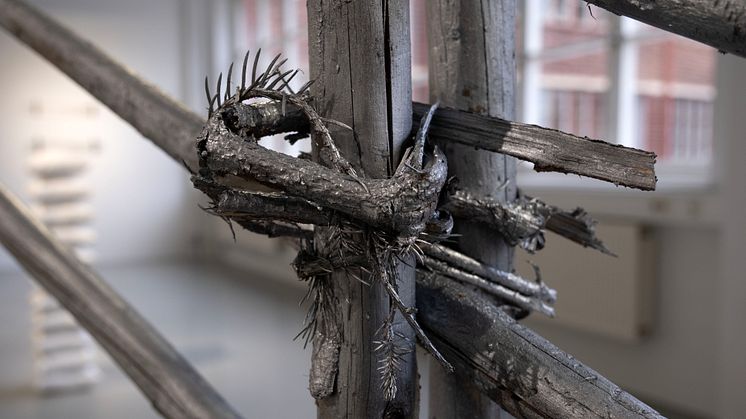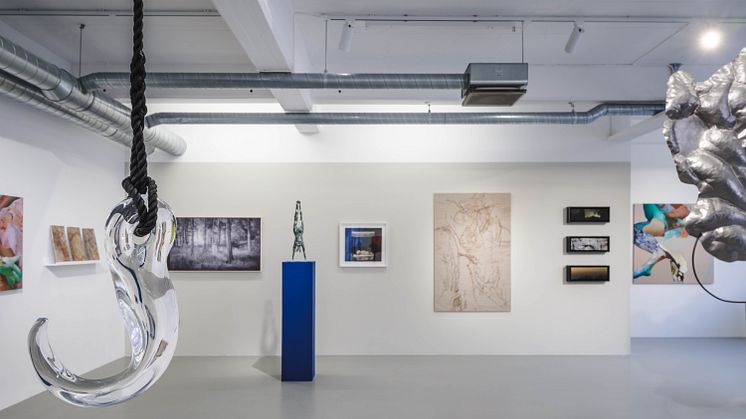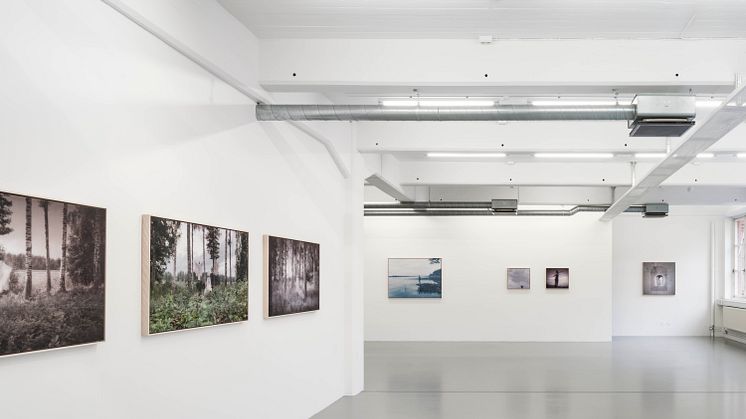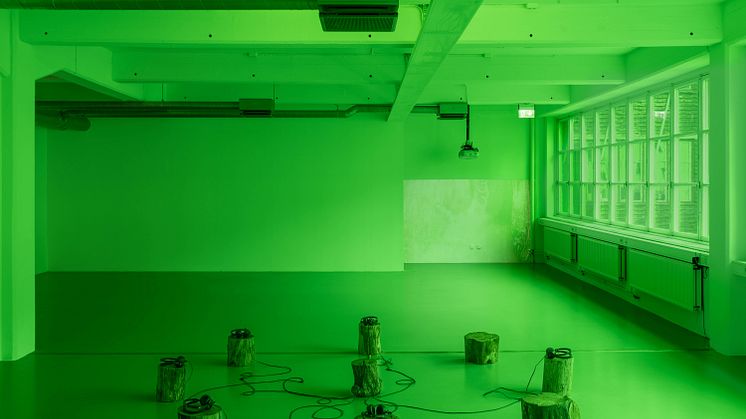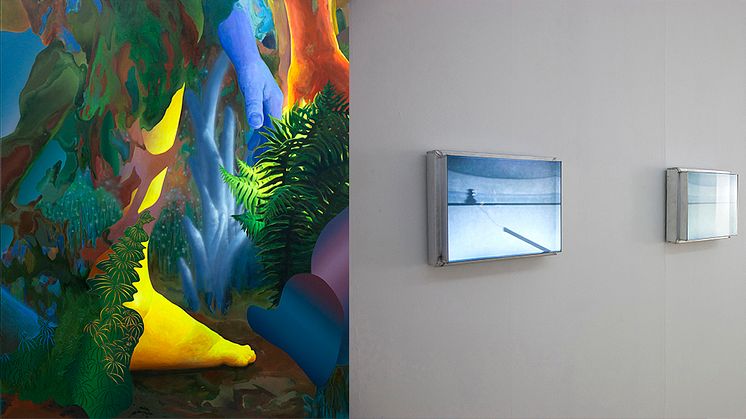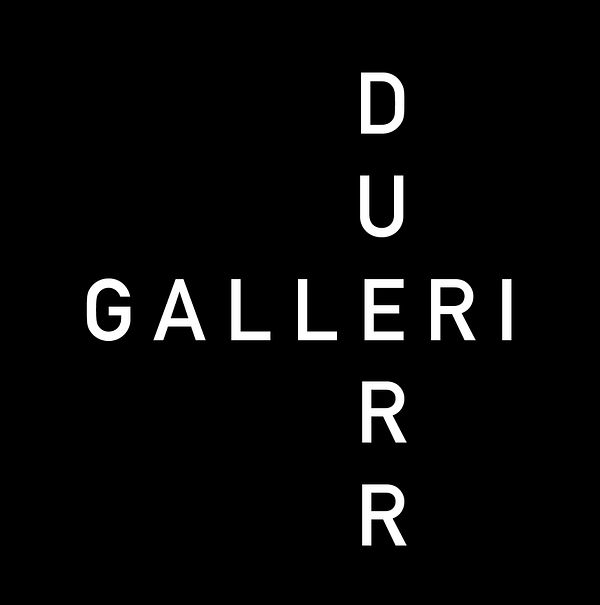Tove Mauritzson
KEEPER
11/04 – 18/05 2024
Seen here:
Hägringen
oil on canvas
170 x 150 cm
Opening reception this Thursday, April 11, 5-8 pm.
A sense of past and present unfolds across the canvases by painter Tove Mauritzson who brings to life a diverse array of narratives framed as portraits, landscapes and still lifes. Her paintings are layered with references to the everyday rhythms of domestic life at home with family, pets, and Swedish traditions but simultaneously incorporate dreamlike atmospheres that allude to the exotic, vintage or mythological.
For the exhibition at Galleri Duerr, Mauritzson presents nine new paintings from 2023-2024. The title of the show, "Keeper", can be interpreted in many ways; Mauritzson describes how one can keep and take care of living creatures or a collection of things, but we also keep and cherish memories, stories and traditions. In Mauritzson’s world, the mundane is replaced with the unexpected: dogs are allowed to stand on tables, living rooms are in disarray, and cacti, mushrooms, and seaweed thrive successfully on farmland. Mauritzson’s practice is unique amongst today’s contemporary Swedish painters; she is one of few artists who capture the simple pleasures and poetic essence of a place, people and time.
– text written by Anne Klontz
@tovepaints
@linningsjostedt
@atriumljungberg
#stockholmgallerydistrict
@anneklontz_exhibitions
